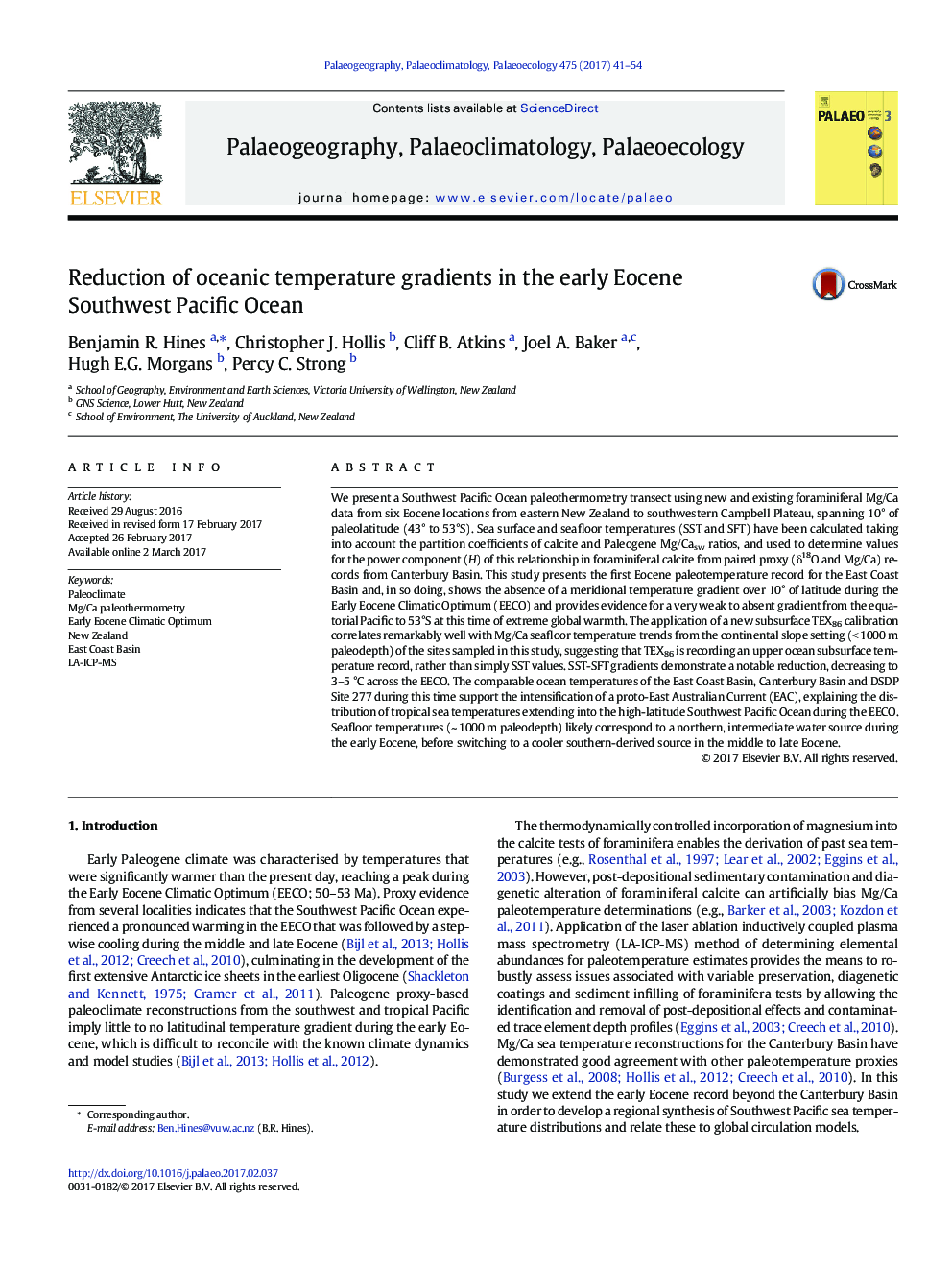| کد مقاله | کد نشریه | سال انتشار | مقاله انگلیسی | نسخه تمام متن |
|---|---|---|---|---|
| 5755673 | 1622117 | 2017 | 14 صفحه PDF | دانلود رایگان |
عنوان انگلیسی مقاله ISI
Reduction of oceanic temperature gradients in the early Eocene Southwest Pacific Ocean
ترجمه فارسی عنوان
کاهش شیب درجه حرارت اقیانوس در اوائل ائوسن در جنوب غربی اقیانوس آرام
دانلود مقاله + سفارش ترجمه
دانلود مقاله ISI انگلیسی
رایگان برای ایرانیان
کلمات کلیدی
موضوعات مرتبط
مهندسی و علوم پایه
علوم زمین و سیارات
فرآیندهای سطح زمین
چکیده انگلیسی
We present a Southwest Pacific Ocean paleothermometry transect using new and existing foraminiferal Mg/Ca data from six Eocene locations from eastern New Zealand to southwestern Campbell Plateau, spanning 10° of paleolatitude (43° to 53°S). Sea surface and seafloor temperatures (SST and SFT) have been calculated taking into account the partition coefficients of calcite and Paleogene Mg/Casw ratios, and used to determine values for the power component (H) of this relationship in foraminiferal calcite from paired proxy (δ18O and Mg/Ca) records from Canterbury Basin. This study presents the first Eocene paleotemperature record for the East Coast Basin and, in so doing, shows the absence of a meridional temperature gradient over 10° of latitude during the Early Eocene Climatic Optimum (EECO) and provides evidence for a very weak to absent gradient from the equatorial Pacific to 53°S at this time of extreme global warmth. The application of a new subsurface TEX86 calibration correlates remarkably well with Mg/Ca seafloor temperature trends from the continental slope setting (< 1000 m paleodepth) of the sites sampled in this study, suggesting that TEX86 is recording an upper ocean subsurface temperature record, rather than simply SST values. SST-SFT gradients demonstrate a notable reduction, decreasing to 3-5 °C across the EECO. The comparable ocean temperatures of the East Coast Basin, Canterbury Basin and DSDP Site 277 during this time support the intensification of a proto-East Australian Current (EAC), explaining the distribution of tropical sea temperatures extending into the high-latitude Southwest Pacific Ocean during the EECO. Seafloor temperatures (~ 1000 m paleodepth) likely correspond to a northern, intermediate water source during the early Eocene, before switching to a cooler southern-derived source in the middle to late Eocene.
ناشر
Database: Elsevier - ScienceDirect (ساینس دایرکت)
Journal: Palaeogeography, Palaeoclimatology, Palaeoecology - Volume 475, 1 June 2017, Pages 41-54
Journal: Palaeogeography, Palaeoclimatology, Palaeoecology - Volume 475, 1 June 2017, Pages 41-54
نویسندگان
Benjamin R. Hines, Christopher J. Hollis, Cliff B. Atkins, Joel A. Baker, Hugh E.G. Morgans, Percy C. Strong,
